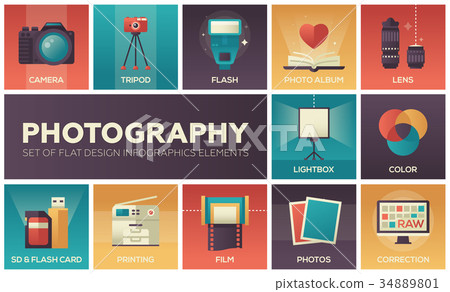What Every Digital Photographer Ought To Find Out About Lights
What Every Digital Photographer Ought To Find Out About Lights
Blog Article
Content Written By-Caldwell Heath
As a digital photographer, you recognize that lights can make or break your images. Comprehending the nuances of both all-natural and synthetic light is vital for catching the mood and clarity you aim for in your work. Whether you're chasing the excellent gold hour radiance or fine-tuning your man-made setups, understanding these aspects can boost your photography substantially. But there are common pitfalls that several overlook, and recognizing them can transform your approach to every shoot. Let's discover what you might be missing out on and exactly how it can impact your results.
Comprehending Natural Light
Understanding natural light is critical for any type of digital photographer seeking to enhance their work. It's the structure of terrific digital photography, affecting mood, tone, and clearness. When you fire outdoors, pay attention to the time of day. mouse click the following website page -- quickly after sunrise and prior to sunset-- provides soft, cozy light that can transform common scenes right into spectacular pictures.
Don't ignore the power of cloudy days. LinkedIn photographer diffuses sunlight, creating a soft, even light that's best for pictures and macro digital photography. Pro photographer near me 'll locate colors appear this kind of illumination without severe shadows.
Positioning issues, also. Always consider https://writeablog.net/cathey270tyrell/checking-out-the-globe-through-the-lens-travel-digital-photography-basics to the source of light. If the sunlight's behind your topic, you may end up with a shape, which can be remarkable however mightn't be what you want. Alternatively, direct sunlight can produce unflattering shadows.
Trying out angles; in some cases, altering your viewpoint can generate outstanding results. Use natural reflectors, like water or sand, to bounce light onto your topic, adding measurement.
Learning Artificial Light
Grasping fabricated light is vital for digital photographers who wish to take their abilities to the next degree. Whether you're utilizing speedlights, workshop strobes, or continuous lights, comprehending just how to control these sources can significantly improve your images.
Beginning by acquainting on your own with the essentials of light high quality, instructions, and shade temperature. Explore various modifiers like softboxes, umbrellas, or grids to control the softness or cruelty of the light.
You'll find that soft light usually produces complementary outcomes, while harsher light can add drama and deepness. Do not shy away from darkness; they can improve the three-dimensionality of your topics.
Pay very close attention to the positioning of your lights. A light located too near to your topic can develop unflattering outcomes, while too away can result in a lack of information. Use a light meter or your camera's pie chart to ensure you're exposing correctly.
Last but not least, bear in mind that synthetic light can be combined with ambient light for creative effects. Balancing these sources may take practice, but once you grasp it, your digital photography will really radiate.
Methods for Various Situations
When you enter different capturing situations, adjusting your lights techniques is important for recording the best images. For exterior pictures, use the gold hour-- morning or late afternoon light-- to soften shadows and boost skin tones.
If it's a harsh noontime sun, think about making use of a reflector to jump light back onto your subject or look for shaded locations for a more also direct exposure.
In low-light scenarios, like indoor occasions, increase your ISO and utilize a vast aperture to allow in more light. A tripod can help eliminate camera shake, permitting longer exposures without blurring.
If you're shooting at night, experiment with off-camera flash to create vibrant lighting and depth in your images.
For product photography, use diffused lights to prevent severe reflections. Softboxes or light tents can assist accomplish this effect.
When photographing landscapes, think about the instructions of light and time of day, as it can significantly transform the state of mind of your shot.
Always prepare to readjust your settings and placing based on the situation, as versatility is key to grasping lighting in photography.
Verdict
In conclusion, grasping lights is essential to raising your digital photography abilities. Accept natural light's charm during golden hour, and do not avoid trying out synthetic light techniques. By adapting your technique to various scenarios, you'll capture sensational photos that resonate with emotion and quality. Bear in mind, the best lights can transform a regular shot into something remarkable, so keep practicing and fine-tuning your understanding of both natural and man-made light. Satisfied capturing!
